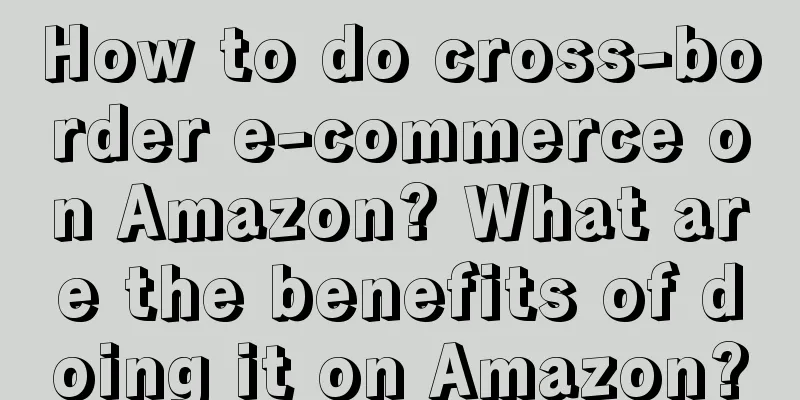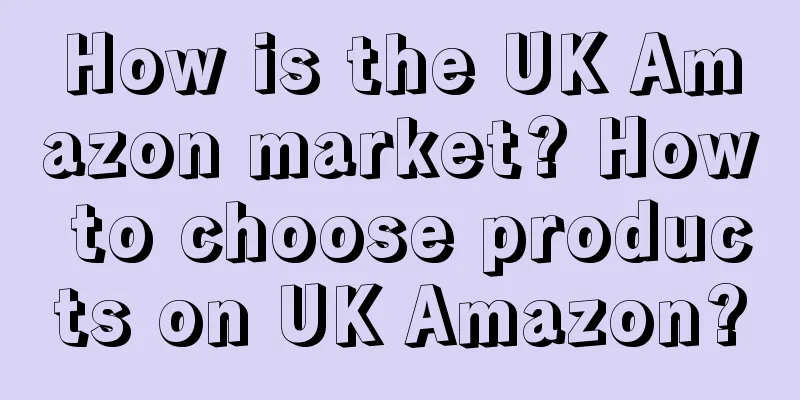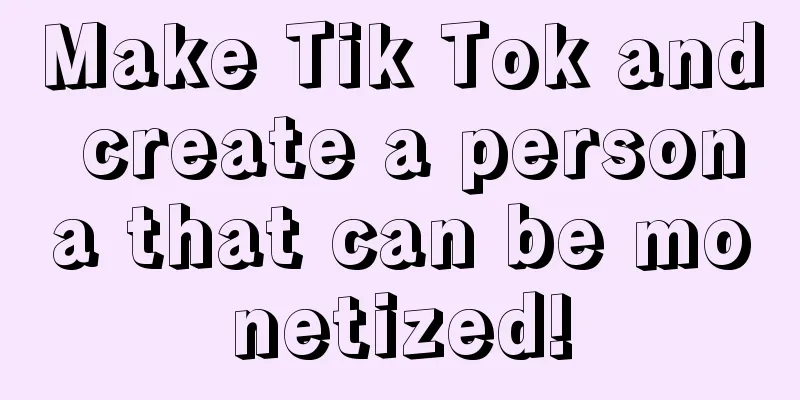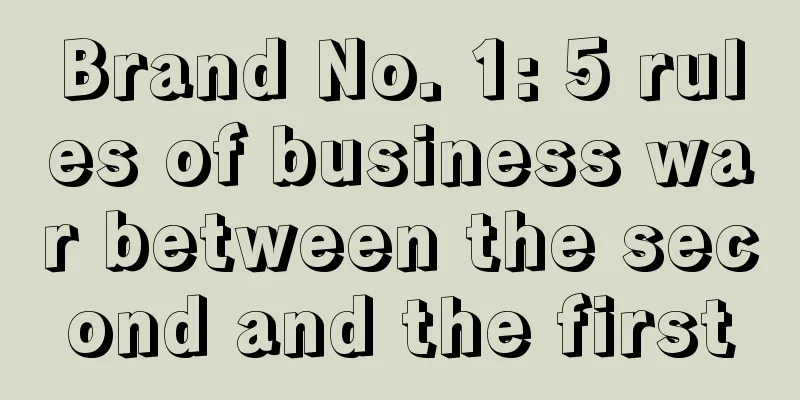How can a car company without money do marketing?
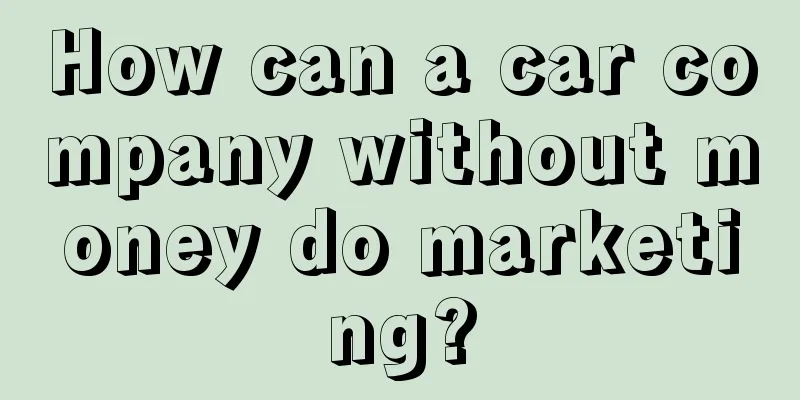
A while ago, Daofa had a conversation with a brand manager from a car company, and he lamented that there hasn’t been an advertisement that has gone viral in the industry for a long time. But car marketing is not silent, it just no longer sticks to the old ways. Lei Jun became the No. 1 Internet celebrity in the car industry overnight, and the top executives of car companies such as Great Wall Motors' Wei Jianjun and Nezha's Zhang Yong followed suit with live broadcasts; Changan Avita cooperated with luxury designers to launch a co-branded limited edition model; and car companies such as Weilai tried the KOS model to try to increase leads online. There are two main reasons behind these changes. First, marketing has entered the 3.0 era, and the strategy of large-scale advertising and mass penetration is becoming ineffective; second, under the fierce price war, many car companies are really out of money and cannot afford to make big moves like sponsoring the European Cup. This brings up a new issue facing the automotive industry and even all walks of life: Under the fragmented and global marketing situation, how can brands with limited budgets develop products, do business, and conduct marketing? Last Sunday, DaoFa and Zhongyin Communication, a well-known marketing service agency in the industry, jointly held a closed-door meeting for automotive CMOs to discuss three hot issues facing automotive marketing in the era of omni-channel marketing:
1. Founder IP, a double-edged sword in the hands of car companiesWhile writing this article, He Xiaopeng, CEO of Xpeng Motors, had just sat in the driver's seat of an Xpeng G6 and started his first live broadcast. Before He Xiaopeng, this year many top executives or entrepreneurs of car companies, including Lei Jun, Wei Jianjun, Li Bin, Zhang Yong, Zhou Hongyi, and Yin Tongyue, have started live broadcasts. From this perspective, the question of whether or not to create an IP for the founder of a car company seems self-evident. However, at the closed-door meeting, we heard slightly different answers from the brand's front-line managers. The consensus among the guests present was that founder IP is a major innovation in the automobile marketing model, but there are three major problems behind it. The first is the question of whether there is a founder. For example, Karl Benz, the founder of the well-known luxury brand Mercedes-Benz, passed away as early as 1929. Today, nearly a hundred years later, which executive of the brand can replace Karl Benz or represent the Mercedes-Benz brand as an IP? The second question is whether the founder is suitable for IP. Taking Mercedes-Benz as an example, if Karl Benz traveled to today, would he have the energy, ability and willingness to show up? Can he communicate effectively with Mercedes-Benz users in the Chinese market? These questions will affect the final communication effect. Third, founder IP is a double-edged sword. On the one hand, some founders and executives do not have a good understanding of the Internet public opinion environment, and some controversial remarks and behaviors in front of the camera may have a negative impact on the brand image; on the other hand, some founders and executives who do not have a strong sense of the Internet, such as some product and technology backgrounds, may create content that no one cares about, which will also affect their work enthusiasm. Behind these specific issues, the starting point for brand people’s thinking is cost. The founder IP wave is essentially "rolled up". In the context of price wars, brand marketing budgets are tightened, and founder IP is one of the few places where free traffic can be obtained. Free things are often the most expensive. Traffic may be free, but the human resources of the team such as content planning and editing, the energy of the founder, etc. are all valuable resources of the company, and the cost is not low when calculated in detail. Previously, a brand person from a car company asked DaoFa a question: Why does it seem that Xiaomi succeeded just by “doing it casually”? Another car company brand person said bluntly: Xiaomi did not become Xiaomi today. It was already Xiaomi when it was founded 14 years ago. To put it in a more abstract way, the Internet is engraved in Xiaomi's genes. Its organizational structure and brand concept are built around the Internet and users. This is also in line with the current user experience: the stronger the Internet genes and the closer the relationship with users of a car company, the more successful the founder's IP, such as Xiaomi, NIO, and Ideal. Back to the original question: Should the founder of a car company create an IP? Ronnie, partner and chief knowledge officer of Zhongyin Communication, believes that brands should start from the end and think from the perspective of the company's overall business model and goals: "If the founder's IP is helpful to the entire company's business chain, then do it. If it is not helpful, I think it can be completely ignored." 2. Should TVC be done? How to do IP co-branding?The first impression of car brands of those born in the 70s, 80s and some of those born in the 90s most likely came from TV commercials. But now, Lei Jun, Li Bin and others are in the limelight, and TVC seems to have no need to exist...right? In fact, there are still well-made and topical TVCs in the automotive industry this year, such as the short film "Walking with Time" co-produced by Audi A8L and Andy Lau in June. Of course, this short film is very different from the old TVC. It is no longer a simple spokesperson shouting a slogan, and the distribution channel has also changed from TV stations to short video platforms. Unlike snacks, daily chemicals and other sectors, there are no white labels in the automotive sector, so we must do something at the brand level. Currently, we see that TVC is gradually declining in the automotive industry. There are two main reasons: First, TVC is more difficult to make. At present, the richness of media content and user touchpoints is unprecedented. When car companies make TVC, it feels like using a cannon to kill a mosquito. The second is the tightening of marketing budgets and changes in assessment dimensions. Whether in the past or now, it is difficult for TVC to quickly and directly improve sales. As the sales rankings in the car industry have changed from quarterly reports to monthly reports and weekly reports, the budget available for TVC has naturally shrunk. As the marketing situation changes, TVC may not be produced, but the brand story still needs to be told. Brand value is like a time deposit, which can bring long-term and stable interest to the brand. Some joint venture brands are still enjoying the brand equity dividend accumulated from some advertisements 5 or even 10 years ago. The story must be told persistently. Should it be told by Lei Jun or Andy Lau? At a press conference, in a factory, or in a car? Brands can choose the right people, scenes, and content based on their own circumstances. In addition to TVC, the guests on site also discussed another content format - IP collaboration. In fact, many car companies have long been masters of IP. Initial D has helped to popularize the modification culture in China; the 007 series has fully demonstrated the British style of Aston Martin; and Transformers has made Camaro the dream car of a generation... But at present, the most discussed IP collaborations are always related to milk tea, coffee, and the two-dimensional world. The most successful of these is the collaboration between Luckin Coffee and Moutai. Car companies also hope to gain some experience from these cases. However, the collaboration between Luckin Coffee and Moutai is hard to replicate for car companies, not to mention Luckin Coffee itself. Both brands are national brands with their own traffic, and they have a strong sense of contrast. The unit price of the co-branded products is not high. The cooperation will inevitably bring about a spiral increase in volume and sales. Ronnie concluded that IP usually has three functions:
Most car companies’ IP joint cooperation is more suitable for the latter two as the core goals. Before doing a joint venture, brands should think about the effect they want to achieve: Is it to gain exposure among the corresponding group of people through the joint venture and reduce CPM? Or is it to leave a mental label in the minds of the corresponding group of people? 3. The global strategy of car companies: the No. 1 position cooperates with front-line salesHaving said so many ways to play, the ones that work well are either double-edged swords or difficult to achieve, so is there really no set of marketing methodologies that are established, replicable, can achieve brand-effect integration, and are suitable for car companies? Not necessarily. In April this year, Chery conducted a "Xingtu Xingjiyuan ET Intelligent Driving Live Broadcast" on Video Account. Chery Chairman Yin Tongyue and Luo Zhenyu live-streamed together to demonstrate Chery's intelligent driving functions. The live broadcast received more than 20 million views, 125 million secondary creation views, and 280 million online readings. This live broadcast not only brought Chery a lot of publicity, but also contributed a set of methodologies to the auto industry: 1. A top celebrity is used to attract industry attention. For example, after Chery Chairman Yin Tongyue invited Luo Zhenyu to create topics through his smart driving live broadcast, he teamed up with Wu Pei, a top celebrity in the car industry, to create buzz. 9 refers to the interpretations by 9 major industry accounts, such as Chery Smart Driving Live, @TOPCara, @千斤顶说车 and other professional accounts, which have provided interpretations, further expanding the influence of the industry. 90 refers to the secondary creation and dissemination of content by 90+ experts in the field. S means 100+ sales dealer forwarding + private community interactive forwarding, breaking the circle through social fission. The core of this methodology is “1”. Xiaomi, NIO, Huawei and other companies, the No. 1 position can take on the function of "1". For example, the recent return of NIO's Mars Red color scheme and the spy photos of Huawei's three-fold folding screen mobile phone were "leaked" from Li Bin's live broadcast and a photo of Yu Chengdong on the plane. Some top players who are not very good at online communication or are not very popular can be paired with an expert like Yin Tongyue to reduce the difficulty and increase the volume. In the first half of this live broadcast, He Xiaopeng invited the top blogger of Station B, "Dapeng Kuai Kaiche", to test the battery life and intelligent driving of Xiaopeng G6. For some niche models, such as luxury MPVs, this "1" can be a well-known entrepreneur. For example, Zhou Hongyi finally chose Zeekr 009, and Zeekr specially held a grand delivery ceremony to create a wave of buzz. In a recent video by Chen Zhen, a top blogger in the car circle, Li Xiaohua, the first Ferrari owner in China, also mentioned this when choosing a car. Zeekr 009 began to establish a luxury mental label among entrepreneurs. With the volume and tone of "1", the brand's next task is to find the right "9" and "90" and expand its dissemination through channels such as sales networks and car owners' private domains. Here we have to mention the KOS model, which car companies are very concerned about. At the conversion level, KOS is a new exploration direction for car companies to "reduce costs and increase efficiency". It has been more than ten years since Tesla's first store in China opened. The incremental growth that offline channels can bring to car companies is quite limited. Online channels are the hope for car companies to reduce CPS. On the communication level, a "central kitchen" is used to coordinate creation, provide materials to front-line sales, and disseminate them on social media platforms. Front-line sales are the key point that triggers a chain reaction of brand topics. Of course, the KOS model is currently in the exploratory stage and still faces many problems, such as low efficiency in replying to sales private messages, low lead conversion rate, and difficulty in formulating sales incentive policies. As for the problems and solutions of the KOS model, Daofa will publish a special content disassembly in the future, so I will not go into details here. 4. Analyst CommentsIn the new marketing wave, the automotive industry's product forms, sales links, business models, market environment, and marketing strategies are changing rapidly and dramatically. What remains unchanged is that brand communication still has to return to the business model and goals, and ultimately serve the people. As the population changes, consumer demand becomes more diverse, and insights into the population become more complex, which is why many car companies have difficulty turning around. Author | Xingzhi Editor | Li Zi This article is written by the operation author [Knife Skills Research Institute], WeChat public account: [Knife Skills Research Institute], original/authorized to be published in the operation party, and reproduction is prohibited without permission. The title image is from Unsplash, based on the CC0 protocol. |
>>: Why 1688 is so clear about "anti-involution"
Recommend
How did “Zibo BBQ” become popular?
In the past month, "Zibo BBQ" has become...
Amazon holds Prime members' early access day to save sluggish sales
In order to boost sales, Amazon has a new way. Thi...
Women's Day is not "Goddess Day", will the "She Economy" face transformation?
The female spirit is constantly being updated, and...
How to write an attractive Amazon title? Tips on writing Amazon titles
Friends who do Amazon e-commerce should not forget...
What is the effect of “picture messages” on WeChat public accounts?
After the diversion of apps such as Toutiao, Douyi...
Forecast of entertainment live streaming trends in 2025: Breakthrough, cross-border and leading new trends (AI version)
According to the tradition of audio-visual observa...
Taking advantage of "Fengshen", whose gameplay is more "toxic" among Alipay, Shuyi and Zhihu?
The popularity of the movie "Investiture of t...
Where should I return my product to? Introduction to Shopify's refund policy
Merchants who open stores on Shopify independent s...
DeepSeek advanced gameplay: mass production of popular content
How to further improve content creation efficiency...
Xiaohongshu "sways" 618
Abandoning the banner of buyer e-commerce and grab...
Which site is easier to do business on Shopee? What are the tips?
There are many sites on the cross-border platform ...
The founder born in the 1990s started from scratch, from an annual income of 1 billion to closing stores and shrinking: "Landing is harder than taking off"
In the new consumption wave, Bosie, as a pioneer o...
New tea brands are entering Northeast counties
This article deeply analyzes the phenomenon of new...
Beware! Eight common misunderstandings in learning data analysis
Data analysis is a popular skill that attracts man...
The method to improve private domain lies in "looking, listening, asking and feeling"
The author of this article uses the method of &quo...
